I admit that I’m not too great at pronouncing the name of this recipe, since my Swedish is undeniably non-existent. But this recipe for Tjälknöl comes straight from Peter, an amazing Swedish Paleo (ish) blogger from over at… you guessed it… Strictly Paleo…ish! So I can promise you that it is legitimately Swedish AND delicious.
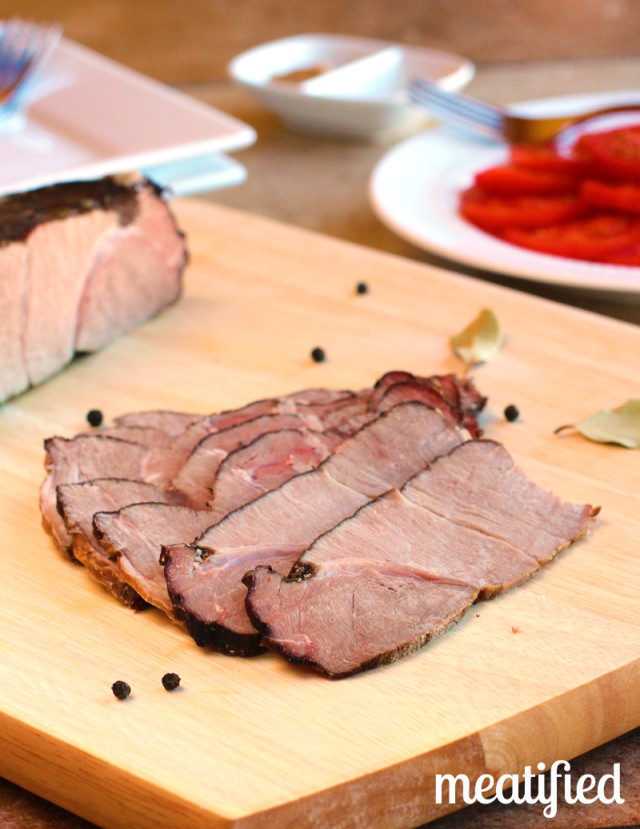
So what’s Tjälknöl? It’s a Swedish dish that takes a frozen piece of beef and transforms it into a roast beef that is tender, flavorful and perfect for slicing and eating cold. Which is fantastic, since 99% of purchasable roast beef slices are neither a) Paleo or b) delicious. Oh, and let me sell you on the best parts:
- You cook it from frozen, so there’s no thawing required.
- Tjälknöl needs to be cooked low and super slow – which means you can cook it overnight and don’t have to fuss over it.
- After it’s roasted, all you need to do is soak it in a brine for a few hours before it is ready to slice (and eat).
Wait, what? Brined beef? As in… brining beef after it’s already been cooked? What’s the deal with THAT? Actually, it’s kind of a cute story. (Hint: Tjälknöl is essentially the marriage-saving roast beef.)
Go read the really adorable origin story of this dish over at Strictly Paleo…ish!
In fact, this recipe for a roasted and then brined beef is rather familiar in some ways. Corned beef is made by brining beef brisket and then boiling it. This recipe for Swedish Roasted & Brined Beef is basically the same: except in reverse!
Admittedly, brining an already-cooked roast beef sounds pretty odd at first. But, when you think about it, a brine serves to add moisture and flavor to meat – adding that back after cooking is kind of a genius idea. It’s also perfect for grass fed beef, which tends to be leaner than commercially farmed beef – which means it can dry out a little more than usual during cooking. This Swedish Roasted & Brined Beef method helps avoid that problem nicely!
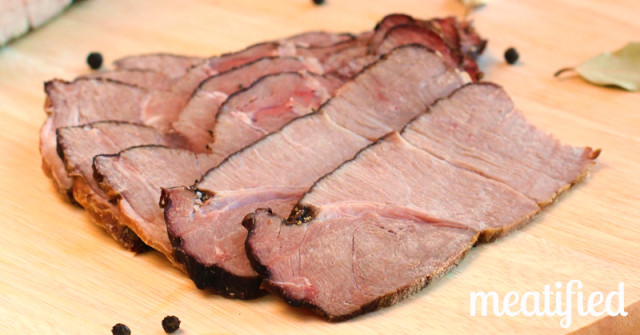
You want a leaner cut for this so that you don’t end up with too much fat marbling through your cold cuts. Any kind of rump or round is perfect (round roast, bottom round roast, eye of round roast, rump roast) but this method will work on pretty much anything you have. Peter says it’s also fantastic for game meats and steaks, although I have yet to try that myself.
I’ve tinkered with the recipe just a little, so be sure to check out the original recipe over at Peter’s site here. I’ve actually made this at least four times – I just never get around to photographing it because it disappears from the fridge so fast!
The cooking time for the brined beef will depend on the cut and thickness of the beef you use. I recommend that you begin to check the internal temperature of your beef after about 7 hours, then adjust your cooking time to suit. Use a digital meat thermometer to make this even easier, like this one. As a very broad rule of thumb, aim for 140F for rare, 150F for medium and (although I wouldn’t advise it) 160F for well done.
Don’t forget to check out Strictly Paleo…ish on Facebook, Pinterest, Google Plus and Twitter, too!
PrintTjälknöl: Swedish Roasted & Brined Beef
So what is Tjälknöl? It’s a Swedish recipe for Roasted & Brined Beef – think Corned beef, but in reverse! Roast your beef, then brine it!
Ingredients
- 3 lb lean beef roast <-- it MUST BE FROZEN!
- 2 cups water, room temperature
- 2 cups water, cold
- 1/2 cup salt (I like this one)
- 2 tbl honey (omit for Whole30)
- 6 cloves peeled garlic, chopped
- 2 bay leaves
- 1 tbl dried thyme
- 1 tsp crushed black pepper (omit for AIP)
- 1/2 tsp ground cinnamon
- 1/2 tsp ground ginger
- Optional: 4 juniper berries (omit for AIP)
Instructions
- Preheat your oven to 210F. Place a wire rack inside a roasting pan and place the frozen beef roast on the wire rack.
- Cook the beef for 7 – 10 hours, until the desired internal temperature is reached. Begin to check the internal temperature of the beef with a digital meat thermometer after 7 hours.
- While the beef is cooking, make your brine. Add two cups of room temperature water and all other ingredients to a saucepan. Warm until the honey has dissolved. Add the cold water to the warm water to cool it down. Refrigerate until needed later.
- Remove the meat when the beef reaches a suitable internal temperature, using these rough guidelines: rare = 140F, medium = 150F, well done is 160F.
- Add the beef to a freezer bag and pour over the brine. Make sure the beef is covered evenly by the brine. Refrigerate the beef in the brine for 5 hours – if it is not evenly covered by the brine, just make sure to rotate it a few times as it brines.
- Remove the beef from the brine and pat it dry. You can serve it immediately, or cover and refrigerate it now for slicing later.


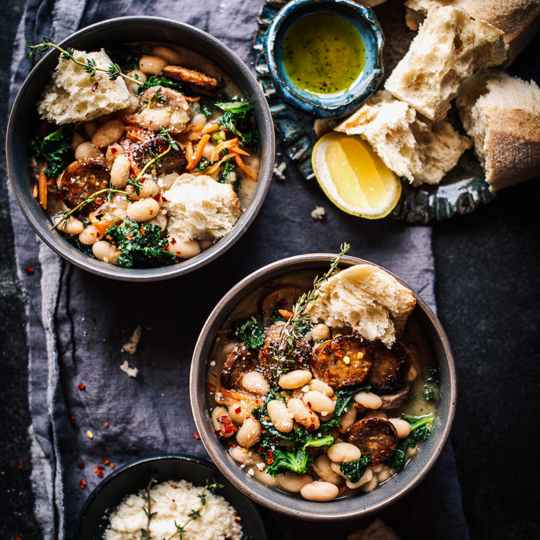

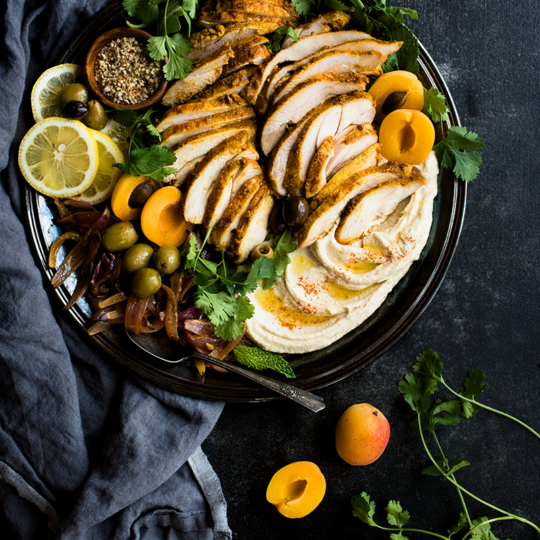




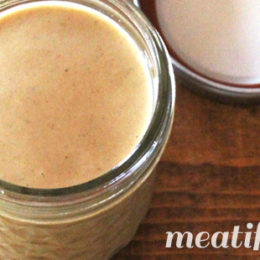
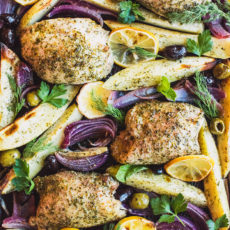












Wait a minute…how can I have missed this post went up 2 days ago??!
(I’ve been so caught up in moving and freshen up my blog lately, and dealing with all the tiny issues related to that, that I have pretty much no idea what has been going on in the real world meanwhile. …e.g. I had some issues with jetpack around the time of this post going live, which I suspect is the reason for missing the pingback).)
Need to step out of my bubble soon.. 😉
Fantastic post Rach, love it!
(Like the addition of cinnamon and ginger too!)
As always, great photos that leave me both drooling and craving! 😉
Cheers!
//Peter
PS.
The link in “I’ve tinkered with the recipe just a little, so be sure to check out the original recipe over at Peter’s site here.” is missing the first “l” in tjalknol, so it leads to a 404.
(The link further up in the post works fine though) 🙂
I noticed you’d re-designed: it looks great! Thanks for the heads up about the link, I fixed it. Oh, and I miss stuff ALL THE TIME! 🙂